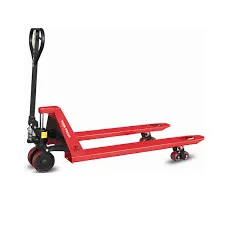


Understanding Lifting Pallet Jacks A Comprehensive Guide
In the world of warehousing and logistics, efficiency and safety are paramount. One of the essential tools that have revolutionized the transportation of goods within warehouses is the lifting pallet jack. Often referred to simply as a pallet jack, this indispensable piece of equipment allows workers to move heavy loads with ease, ultimately increasing productivity and minimizing the risk of injury.
What is a Lifting Pallet Jack?
A lifting pallet jack is a type of manual or powered device designed to lift and transport pallets. Typically constructed with a metal frame, forks, and wheels, a pallet jack can either be operated manually or powered by a battery. The forks slide beneath the pallet, and using a hydraulic lifting mechanism, the pallet jack elevates the load, allowing operators to easily move it.
Types of Pallet Jacks
1. Manual Pallet Jacks The most common form, manual pallet jacks rely on human power for operation. Workers pump a handle to raise the forks, lifting the loaded pallet off the ground. These jacks are cost-effective and ideal for lighter loads, making them suitable for smaller warehouses or businesses.
2. Electric Pallet Jacks Equipped with a battery-powered lift and an electric motor, these jacks are designed for heavier loads and longer distances. Operators can maneuver these jacks with little physical effort, making them an excellent option for larger warehouses where manual jacks might be impractical for the volume of goods handled.
3. High-Lift Pallet Jacks For those needing to lift pallets to greater heights, high-lift pallet jacks offer the ability to raise loads higher than standard jacks. These are particularly useful in assembly lines or for restocking shelves.
Advantages of Using Lifting Pallet Jacks
2. Enhanced Safety By leveraging hydraulics, pallet jacks reduce the physical strain on workers. This minimizes the risk of workplace injuries that can occur when lifting heavy items manually.

3. Versatile Usage These jacks can be used in various settings. From warehouses to retail, they are effective in managing diverse types of loads, including boxes, crates, and even heavy machinery.
4. Cost-effective Compared to forklifts, pallet jacks are significantly less expensive to maintain and operate, providing a budget-friendly alternative for many businesses.
Best Practices for Using Lifting Pallet Jacks
To maximize the benefits of lifting pallet jacks, operators should adhere to the following best practices
1. Training Ensuring all operators are properly trained on how to use pallet jacks is crucial. They should understand the weight limits, proper maneuvering techniques, and safety precautions to minimize risks.
2. Routine Inspections Regularly checking the condition of the pallet jack, including the wheels, forks, and hydraulic mechanisms, will help ensure safe and efficient operation.
3. Clear Pathways Maintaining clear walkways and work areas will reduce the chance of accidents. Workers should be trained to look out for potential hazards while operating a pallet jack.
4. Load Distribution Operators should ensure the load is evenly distributed on the pallet to prevent tipping or loss of control during transportation.
Conclusion
Lifting pallet jacks have become an integral part of the logistics and warehousing industry. Their ability to enhance efficiency, improve safety, and save costs makes them a vital tool for any business handling heavy loads. By understanding the various types of pallet jacks available and adhering to best practices, businesses can ensure they leverage this equipment to its fullest potential, optimizing their operations and keeping employees safe. As industries continue to evolve, the role of pallet jacks will undoubtedly remain critical in the quest for operational excellence.



